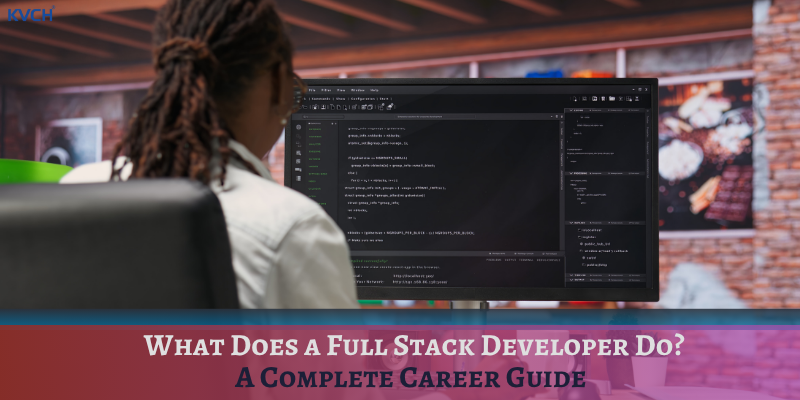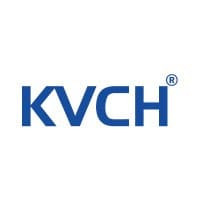What Does a Full Stack Developer Do? A Complete Career Guide

Strong 8k brings an ultra-HD IPTV experience to your living room and your pocket.
In the dynamic world of technology, the role of a full stack developer has become a cornerstone of modern web development. These versatile professionals are in high demand for their ability to build complete web applications, from the user interface to the server and database. This guide explores what a full stack developer does, with a focus on Java Full Stack Developer roles, the skills required, career opportunities, and how to embark on this rewarding career path through a Full Stack Developer Course or Java Course.
Introduction to Full Stack Development
A full stack developer is a jack-of-all-trades in web development, proficient in both front-end (client-side) and back-end (server-side) technologies. The term "full stack" refers to the complete set of tools and technologies needed to create a web application, from what users see on their screens to the behind-the-scenes logic that powers it. Full stack developers are highly valued for their ability to work across all layers of a project, making them essential in today’s tech-driven industries.
For those specializing as Java Full Stack Developers, Java serves as the backbone for back-end development, often paired with frameworks like Spring Boot. These developers may also integrate front-end technologies, making them versatile contributors to any development team.
What Does a Full Stack Developer Do?
Full stack developers handle a wide range of tasks to bring web applications to life. Their responsibilities span the entire development process, ensuring a seamless user experience and robust functionality. Here’s a detailed look at their key duties:
1. Front-End Development
- Technologies Used: HTML, CSS, JavaScript, and frameworks like React, Angular, or Vue.js.
- Tasks: Designing and building user interfaces that are visually appealing and responsive across devices (desktops, tablets, phones). This includes creating layouts, buttons, forms, and ensuring a smooth user experience.
- Example: A full stack developer might use JavaScript and React to create an interactive dashboard for a web application.
2. Back-End Development
- Technologies Used: Programming languages like Java, Python, Ruby, or Node.js, with frameworks such as Spring Boot (for Java) or Django (for Python).
- Tasks: Writing server-side logic to handle requests, process data, and manage application functionality. This includes developing APIs (often RESTful or GraphQL) to connect the front-end with the back-end.
- Example: A Java Full Stack Developer might use Spring Boot to build a secure API for an e-commerce platform.
3. Database Management
- Technologies Used: SQL databases (MySQL, PostgreSQL) or NoSQL databases (MongoDB).
- Tasks: Designing and maintaining databases to store and retrieve data efficiently, ensuring data integrity and security.
- Example: Setting up a MySQL database to store user profiles and transaction records.
4. Integration and Deployment
- Technologies Used: DevOps tools like Docker, Kubernetes, and cloud platforms like AWS, Azure, or Google Cloud.
- Tasks: Integrating front-end and back-end components, deploying applications to servers or cloud environments, and monitoring performance post-deployment.
- Example: Deploying a web application to AWS using Elastic Beanstalk for scalability.
5. Problem-Solving and Debugging
- Tasks: Identifying and fixing bugs, optimizing code for performance, and ensuring the application meets user requirements.
- Example: Debugging a performance issue in a web application by optimizing database queries.
6. Collaboration
- Tasks: Working with designers, product managers, and other developers to align on project goals, timelines, and deliverables.
- Example: Collaborating with a UI/UX designer to ensure the front-end aligns with the design mockups.
Focus on Java Full Stack Development
Java is a powerhouse in back-end development, known for its robustness, scalability, and widespread use in enterprise applications. A Java Full Stack Developer leverages Java’s capabilities to build secure and efficient back-end systems while also handling front-end tasks.
Why Choose Java for Full Stack Development?
- Robustness and Scalability: Java’s “write once, run anywhere” philosophy ensures applications can scale across platforms.
- Rich Ecosystem: Java offers frameworks like Spring Boot and Hibernate, which streamline back-end development.
- Community Support: A vast community provides extensive resources, tutorials, and forums for developers.
Key Technologies in Java Full Stack Development
While Java is primarily used for back-end development, Java Full Stack Developers may integrate with front-end technologies like React or Angular via APIs. In some cases, they use JSP for dynamic front-end content, though this is less common compared to modern JavaScript frameworks.
Skills Required for a Full Stack Developer
To excel as a full stack developer, particularly in a Java-focused role, you need a diverse skill set. Here’s a breakdown of the essential skills:
1. Programming Languages
- Java: Essential for back-end development, especially in enterprise settings.
- HTML, CSS, JavaScript: For creating and styling user interfaces.
2. Frameworks and Libraries
- Back-End: Spring Boot, Hibernate for Java-based development.
- Front-End: React, Angular, or Vue.js (though less common for Java-focused developers).
3. Database Management
- SQL Databases: MySQL, PostgreSQL for structured data.
- NoSQL Databases: MongoDB for flexible, unstructured data.
4. Version Control
- Git: For managing code changes and collaborating with teams.
5. DevOps and Cloud
- Cloud Platforms: AWS, Azure, Google Cloud for deploying and scaling applications.
- Containerization: Docker, Kubernetes for managing application environments.
6. Soft Skills
- Problem-Solving: Crucial for debugging and optimizing code.
- Communication: For collaborating with team members and stakeholders.
- Adaptability: To keep up with rapidly evolving technologies.
Career Path and Opportunities
The demand for full stack developers is soaring, driven by the need for versatile professionals who can handle end-to-end development. Here’s a look at the career landscape:
Job Market
- Full stack developers are among the most sought-after roles in tech, with companies valuing their ability to reduce the need for multiple specialists.
- The U.S. Bureau of Labor Statistics predicts a 17% job growth for software developers between 2023 and 2033, with full stack roles being particularly in demand.
Salary Expectations
Growth Potential
- Full stack developers can advance to roles like tech lead, software architect, or CTO.
- Specializing in areas like cloud computing, DevOps, or Java frameworks can further boost career prospects.
How to Become a Full Stack Developer
Becoming a full stack developer requires a blend of education, practical experience, and continuous learning. Here’s a step-by-step guide:
1. Educational Paths
- Formal Education: A degree in Computer Science or a related field provides a strong foundation in programming and system design.
- Online Courses and Bootcamps: Platforms like Coursera, Udemy, and Codecademy offer comprehensive Full Stack Developer Courses and Java Courses. Bootcamps provide intensive, project-based learning.
-
Certifications: Consider certifications like:
- Oracle Certified Java Programmer (OCAJP): Validates Java programming skills.
- Spring Professional Certification: Demonstrates expertise in Spring frameworks.
- AWS Certified Developer: Enhances cloud deployment skills.
2. Hands-On Experience
- Build Projects: Start with simple projects like a to-do list app and progress to complex applications like an e-commerce platform.
- Contribute to Open Source: Gain real-world experience and build a portfolio by contributing to open-source projects.
- Internships and Junior Roles: Practical experience in real projects helps bridge the gap between theory and practice.
3. Continuous Learning
- The tech industry evolves rapidly, so staying updated with new tools, frameworks, and best practices is essential.
- Follow industry blogs, attend webinars, and participate in developer communities like GitHub or Stack Overflow.
The Importance of Courses and Certifications
Enrolling in a Full Stack Java Developer Course or a general Full Stack Developer Course can accelerate your learning journey. These courses offer:
- Structured Learning: Covering all essential topics systematically.
- Hands-On Projects: Simulating real-world development scenarios.
- Mentorship: Guidance from industry experts to navigate challenges.
Recommended resources include:
- Coursera Java Full Stack Developer Specialization
- Udemy Full Stack Java Development Course
- GUVI Certified Java Full Stack Developer Course
Conclusion
A career as a full stack developer, particularly a Java Full Stack Developer, offers immense opportunities in the tech industry. With the ability to work on both front-end and back-end, you become a versatile asset capable of tackling diverse challenges. By mastering key technologies like Java, Spring Boot, and front-end frameworks, and by pursuing a Full Stack Developer Course or Java Course, you can build a rewarding career with strong growth potential.
Whether you’re a beginner or an experienced developer looking to expand your skills, the path to becoming a full stack developer is both challenging and exciting. Start your journey today with a Full Stack Java Developer Course and unlock a world of possibilities in web development.
Note: IndiBlogHub features both user-submitted and editorial content. We do not verify third-party contributions. Read our Disclaimer and Privacy Policyfor details.







